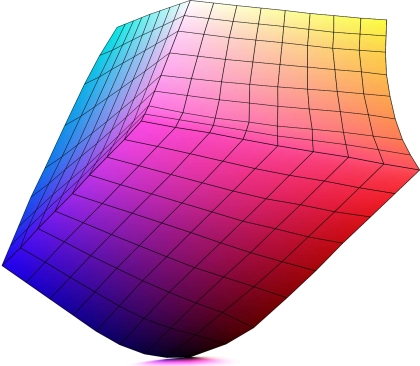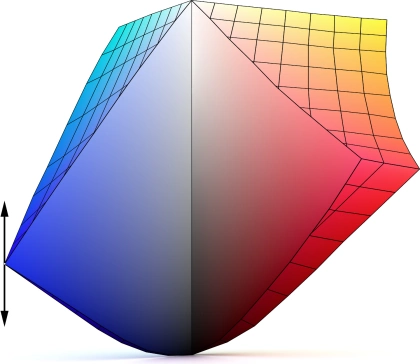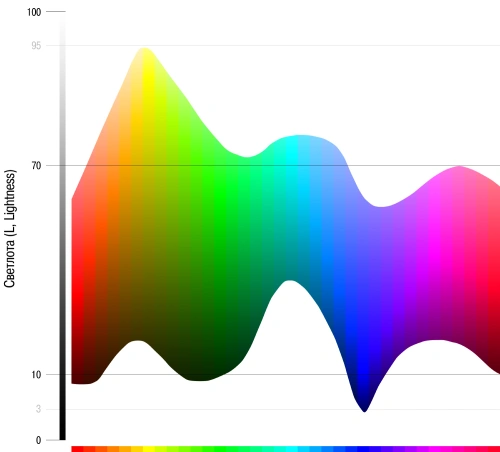What is ‘a pleasant combination of colors’, exactly? Where does color ‘live’? To answer this question, whether we are studying photography or painting, we need go gain a better understanding of the nature of color and learn how it is perceived by the human eye.
Numerous philosophers and artists have been asking similar questions for hundreds of years; so, as an aesthetic category, color is quite well theorized. In fact, the color discussion started as early as the 5th century BC, in the works of Empidocles and Zeno of Elea. A little later Democritus, Plato, Epicurus, Aristotle, and Lucretius joined the debate. Other notable students of color include Galileo, Descartes, Leonardo da Vinci, Newton and Goethe; the latter accumulated all the knowledge he had gathered in his 1810 opus magnum, The Theory of Colours (Zur Farbenlehre). It took the German Romantic 20 years to complete the tome, and, according to Johan Eckermann, Goethe was more proud of this work than of any of his achievements as a poet.
Goethe’s principal standpoint – and the core of his disagreement with Newton – was the idea that color is a sense, and as such is a matter of human perception. For Newton, on the other hand, color was a phenomenon of reality that could be analyzed on its own terms. In his fundamental work, Goethe was able to show that perception of different colors is a result of many factors, such as the influence of adjacent colors and light.
Researchers agree that color perception depends heavily on lightness. Here’s what Goethe wrote on the subject: “It may naturally be asked whether, in proposing to treat of colours, light itself should not first engage our attention … The colours are acts of light; its active and passive modifications … Colours and light, it is true, stand in the most intimate relation to each other…”
Goethe was not the first and certainly not the last to point out the interconnection of color and light; similar ideas were put forward by many artists and professional colorists both before and after 1810. Thus, in 1435, Leon Battista Alberti, an Italian scholar of the Renaissance period, wrote, “It seems obvious that colors vary according to lights, because when any color is placed in the shade, it appears to be different from the same color which [is] located in light.”
In his book, Color and Contrast, Technology and Artistic Choice, a prominent cinematographer Valentin Zheleznyakov notes, “…rendering of colors is subordinate to rendering of tones, the latter being a wider property. Incorrect rendering of tone results in incorrect rendering of colors!”
Yet another person who theorized the interrelations of light and color was a French art historian, Roges de Piles. According to him, in works of art, advantageous distribution of lights and shadows (or Claro Oscuro) is inseparable from the notion of coloring, and proper arrangement of lights and shadows is as important as proper arrangement of colors.
Edwin Herbert Land, one of the founders of Polaroid, used to say that color was much more connected with lightness than people would normally think.
A Russian artist and professor of art, Nikokai Krymov, believed finding the right tones, i.e. lightness, to be crucial in producing a successful painting.
The perception of color changes with the change of its luminosity. This can be clearly seen if we look at colors that are ‘pure’ – in other words, the ones with maximum saturation. This approach will help us analyze and study the most important characteristics of any given hue.

Figure 2.1 [a]
First, let’s open Adobe Photoshop and draw something resembling a rainbow – only our rainbow will consist of a number of strips of saturated colors (fig. 2.1 [a]). To reach this level of high saturation – and the purity of my colors – I used the HSB model with the following settings: S (Saturation) = 100, B (Brightness) = 100, and H (Hue) varying by 10 degrees from color to color. In the end I came up with a 360-degree spectrum clearly separated into 36 hues.
Let us now overlay this picture with a neutral gradient, with L (Lightness) ranging from 0 (black spot) to 100 (white spot) in Lab color space (fig. 2.1 [b]), and use Luminosity settings while doing so. Thus, we will get color from the first picture and light from the second. The resulting picture will reflect out perception of pure (i.e. fully saturated) colors depending on how light or dark they are (fig. 2.2).

Figure 2.1 [b]
This exercise is, of course, an approximation: my method is arbitrary, as is my definition of the ‘purity’ of color, not to mention the rendering of colors that is affected by my computer settings. The graphic properties of the book you’re holding are not perfect either. Had we used different color models or tried to show the same hue/light correlation on canvas, we could get a slightly different picture. Yet I doubt that the difference would be so dramatic – in the end, any experiment with a setup of this kind will illustrate the peculiarities of human perception of color.

Figure 2.2
So what can be seen in the resulting image?
Most strikingly: each color reaches its full saturation at a certain level of lightness, and these levels don’t match. Yellow, for example, is at its most saturated in areas with the most light, while blue ‘prefers’ much darker spots.
In fact, in his 1932 book, A Reference Book of Colour. The Laws Governing Variability of Colour Combinations, the artist Mikhail Matyushin speaks of similar patterns: “Red, which is 10 times lighter than blue during the day, turns out to be 16 times darker than blue once the sun sets”.
Another obvious observation relates to colors that are either very dark or very light: these lean, respectively, towards black and white when their saturation is at its peak. The lightest of colors – with the exception of yellow and its closest neighbors – look somewhat washed out. The lighter the color, the more difficult it is to distinguish it from adjacent hues. At peak lightness all colors merge into white. The darkest colors – except for blue and its immediate surroundings – are equally indistinguishable, and collapse into black at L approaching zero.
Take any fully realized color as a starting point – and any significant lighting or darkening of said color will inevitably lead to the loss of saturation. Here’s what Valentin Zheleznyakov writes about this phenomenon: “As a practicing artist, Munsell knew that colors – let alone paints – which he systematized in his ‘color solid’, cannot have the same lightness when fully saturated.” 3D color models illustrate this very well, since they can – to a degree – reflect the mechanism of human perception. The sRGB model, although smaller in size, corresponds in its shape to the color solid as perceived by the human eye.

Figure 2.3
Figure 2.3 shows the 3D sRGB color model in Lab color space. To better understand how color is perceived, we need to look inside the model – in fact, I took the liberty of cutting a slice of this curiously shaped cake for closer examination of its structure (fig. 2.4).

Figure 2.4
Here, the central vertical axis is L, Lightness, with a black spot (L=0) at its base, and a white spot (L=100) at the top. All hues along this axis are achromatic, that is, neutrally grey. Chromatic, or color, hues are only observed at a distance from the vertical axis, and their saturation increases as they move away from the core (fig. 2.5).

Figure 2.5
One can see, for instance, that blue hits the peak of its saturation (i.e., the furthest possible distance from the corresponding monochrome hue) at a rather low lightness level (fig. 2.6).

Figure 2.6
It is still possible to make this color darker or lighter by moving it up and down parallel to the axis of lightness and keeping its saturation stable, but if we do that we will enter the color zones that are not perceived by the human eye. (fig. 2.7).

Figure 2.7
By increasing the lightness of such color, we are in fact moving it on the outer shell of the 3D model, gravitating towards the white. The reverse is also true, only in this case the color with increased darkness will gravitate towards the black. (fig. 2.8).

Figure 2.8
In other words, when we try to lighten or darken any fully saturated color, it loses saturation.
Now let us try to determine the range of lightness, in which colors are both saturated and clearly defined, and their lightness grades are easily distinguishable. We will start with the picture in fig. 2.2 and only cut out the hues that match our criteria. We will then compare the resulting image (fig. 2.9 [а]) with the range of remaining colors (fig. 2.9 [b]). Note that the area of saturated colors is shifted towards the darker edge on the lightness scale – with the exception of yellow, orange, and some green and light green hues.
In other words, when we try to lighten or darken any fully saturated color, it loses saturation.
Now let us try to determine the range of lightness, in which colors are both saturated and clearly defined, and their lightness grades are easily distinguishable. We will start with the picture in fig. 2.2 and only cut out the hues that match our criteria. We will then compare the resulting image (fig. 2.9 [а]) with the range of remaining colors (fig. 2.9 [b]). Note that the area of saturated colors is shifted towards the darker edge on the lightness scale – with the exception of yellow, orange, and some green and light green hues.

Figure 2.9 [a]
The area of unsaturated, pastel colors lies in the light and very light part of the scale, while dark colors are almost indistinguishable in dark conditions, apart from some hues of blue and purple. In Color and Contrast. Technology and Artistic Choice Valentin Zheleznyakov writes: “ … one can say that the real color is only found in key areas of brightness – in half-light and reflex. … Half-shadows provide for a fully realized color of the subject, with reduced overtones, since human perception of color is narrower than the perception of differences in luminosity”.

Figure 2.9 [b]
Let us now ‘measure’ our observations. It’ll help to better navigate the digital rendition of colors, and to structure further discussion on the subject. I must warn the reader, however, that the numbers I give are not 100% correct, and are merely needed for a general understanding of the problem. Moreover, if you take initiative and do your own research, the numbers you come up with may – and will – be slightly different, yet close to those shown here, since they do reflect the peculiarities of human perception of color.

Figure 2.10
Figure 2.10 shows that the lowest point of color blue corresponds to the level of lightness 3L. Hue variations in a darker range are hardly distinguishable for the human eye – in our mind we file them all as ‘black’. The highest point of color yellow corresponds to the level of lightness 95L. Lighter hues are also indistinguishable and are perceived as ‘white’. These would be the extremes. The picture clearly shows that the ‘working’ color range, i.e. the lightness frame within which we can distinguish most hues of all colors, is approximately 10 to 70L.
Most colors in this range:
- will hit their peak saturation (as perceived by the human eye);
- will display the richest variety of hues in relation to lightness (with clear gradation);
- will show the most ‘character’ (i.e. will be easily distinguishable from other colors).
We need to remember, however, that each color has its own optimal lightness range – that is, such lightness conditions in which the color is both highly saturated and extremely variable.
Dividing lightness scale into separate areas is a useful exercise: it improves our theoretical understanding of the nature of human color perception, and gives us practical tools for achieving target saturation and variability of colors in a photograph (taking into account both individual goals of the photographer, and the color scheme of an image they are working on).
So did we manage to locate color, find out where it ‘lives’? I should think so. We know that it generally doesn’t lurk in the dark alleys – these places are reserved for shades of blue and purple, all the other colors prefer to settle down elsewhere. Where exactly? In the middle section of the lightness scale – look at it, and you will find a while megacity of color! All kinds of hues have found their home there, and all of them thrive at the peak of their saturation. What about the top floors and ‘penthouses’ of light? Naturally, these are reserved for sophisticated, subtle pastels, and the only color that dares to rise higher to the sun is the skyscraper of highly saturated yellow.
LIFELIKE: A book on color in digital photography
